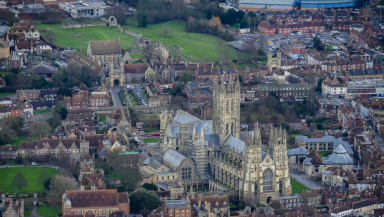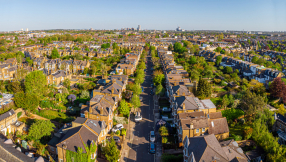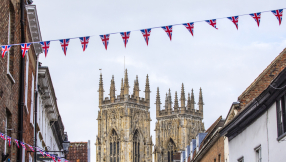
To many, they might seem a historical curiosity more at home in the pages of classic literature like Chaucer's Canterbury Tales but, according to travel experts, pilgrimages are far from a thing of the past in the UK. Instead, new pilgrims are discovering the age-old attractions of the pilgrim trails to Canterbury and Holywell every day, and experiencing Britain in a whole new way.
This return to the age-old practice of pilgrimage is not limited to Britain, with pilgrims returning to sacred routes all across Europe. The Camino de Santiago de Compostela—Europe's most popular pilgrimage that takes travellers to the shrine of the Apostle James in Northwest Spain—was completed by a record 442,073 people last year.
However, with some Brits unable to find the time or funds required for an extended European pilgrimage, there are a number of trails that date back centuries closer to home, offering something both to recreational walkers and those seeking spiritual adventure.
"Britain's remarkable pilgrim trails offer a very different kind of holiday for people wanting to better understand their country, keep fit or to recharge their spiritual batteries," Lily Smith, a leading travel expert from Monasteries.com, said. "Even this summer, when the sun seems to have forgotten how to shine, many people have already completed an historic pilgrim trail.
"To paraphrase John Bunyan's The Pilgrim's Progress: 'There's no discouragement, shall make them once relent, their first avowed intent, to be a pilgrim'."
Canterbury Cathedral, where Archbishop Thomas Becket was martyred in 1170, was already a destination for pilgrims long before Chaucer's famous book was written in 1400. Sadly, the Tabard Inn in Southwark, London, from where his band of pilgrims embarked, was demolished in the Victorian era, but a sense of what it would have been like can be felt at the nearby George Inn, the only surviving galleried coaching inn in London.
For those wanting to immerse themselves in the spiritual atmosphere of the route, it is possible to stay at a number of monasteries and other properties owned by religious institutions along the way. One notable site is St Monica House in Kennington, London, which is run by the Maltese Province of the Augustinian Sisters Servants of Jesus and Mary.
"Of course, Chaucer's route has a little more traffic now than it did in the medieval period," Lily said. "That's why many people follow the equally old Pilgrims' Way to Canterbury from the historic cathedral city of Winchester."
Many pilgrims actually begin their journey in Winchester's sister cathedral city, Salisbury, with the Clarendon Way linking these two ancient cities. They are able to stay at Sarum College, a theological college based in 17th-century buildings just opposite Salisbury Cathedral.
The Pilgrims' Way 'proper' is a 119-mile (192km) walk that follows an ancient trackway that dates back to pre-Christian times, running the entire length of the North Downs, linking the English Channel to ancient religious sites like Avebury and Stonehenge.
Canterbury is far from the only significant destination for pilgrims in the United Kingdom, with the 130-mile (215km) Pilgrim's Way that begins in Holywell, Flintshire, and leads to Bardsey Island, North Wales.
"As its name implies, for centuries Holywell was important for its Holy Well. Visitors can still explore the ancient St Winefride's well shrine," Lily said.
This route also offers pilgrims the chance to stay in a religious community, with the Bridgettine Sisters welcoming visitors to St Winefride's Guest House, with the neighbouring Convent Chapel always open to visitors.
Pilgrims depart from the ruins of Holywell's Basingwerk Abbey, heading west through Abergwyngregyn, and following sections of the Wales Coast Path and Llyn Coast Path—a designated Area of Outstanding Natural Beauty. Bardsey Island possesses attractions for those on a less spiritual journey, as it is famous for its scenery, wildlife, and rugged coastline. However, Bardsey Island is also known as the 'island of 20,000 saints', and has been an important religious site since the 6th century, allowing pilgrims to visit its many stone churches dedicated to Celtic saints.













